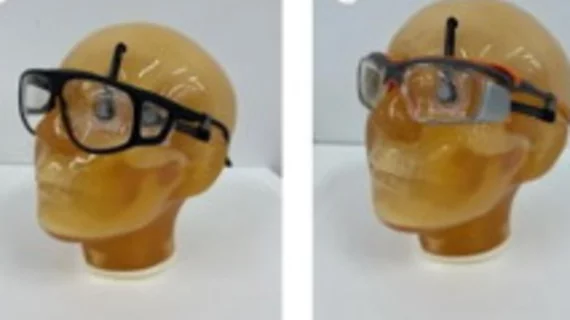Not all lead glasses are created equal
Not all lead eyewear offers the same amount of protection from radiation exposure, according to a new comparison.
Eyewear is critical for reducing eye lens exposure to radiologists involved in interventional procedures. Though effective, these protective glasses are not without fault and higher lead content does not necessarily equate to more protection, authors of a new paper in the European Journal of Radiology caution.
“Scattered rays entering through the gap between the lens of the glass and the face have a strong influence on exposure to the lens,” Shinya Imai, with the faculty of medical sciences technology at Morinomiya University of Medical Sciences in Japan, and colleagues note. “In particular, the incident area of scattered X-rays due to the gap between the lens and face varies depending on the orientation of the face of the surgeon with respect to the center of X-ray irradiation; therefore, the protection ratio against scattered rays may also vary depending on the shape of the glasses.”
The group conducted a phantom analysis into how different aspects of lead glasses, including lead content, face orientation and shape, might affect lens-equivalent doses. They simulated an endoscopic retrograde cholangiopancreatography exam using a phantom surgeon positioned 60 cm from the center of the X-ray source, beside the patient’s head at a 45° angle relative to the patient’s midline. From this position, equivalent doses were measured after moving the phantom to three different orientations—45° left, 0° and 45° right—and when using different types of lead glasses with lead-equivalent values ranging from 0.07 to 0.75 mm Pb.
When wearing the 0.75 mm Pb and 0.15 mm Pb glasses and when the surgeon’s head was oriented to the left, the team observed an increase in equivalent dose. They attributed this to the lead content, with glasses that had higher lead equivalents typically creating larger gaps between the eyewear and surgeon's face. In contrast, glasses with lower lead equivalents (around 0.07 mm Pb) offered greater protection (rates of 75% and higher) due to their smaller gaps. The glasses with the largest gaps showed a value of less than 50% scatter-ray protection, regardless of lead content.
“Single regression analysis indicated that the X-ray scatter protection ratio of radiation protection glasses is related to the size of the lower gap area between the lenses and the skin,” the group explains. “This results in scattered rays reaching the lens of the surgeon mainly from below.”
The authors acknowledge that equivalent doses will vary based on a number of factors, including head shape, provider height and body habitus, procedure type and more. However, they suggest that gaps between the lower portions of glasses and the skin should be strongly considered in the future design of protective eyewear.
Learn more about their findings here.

